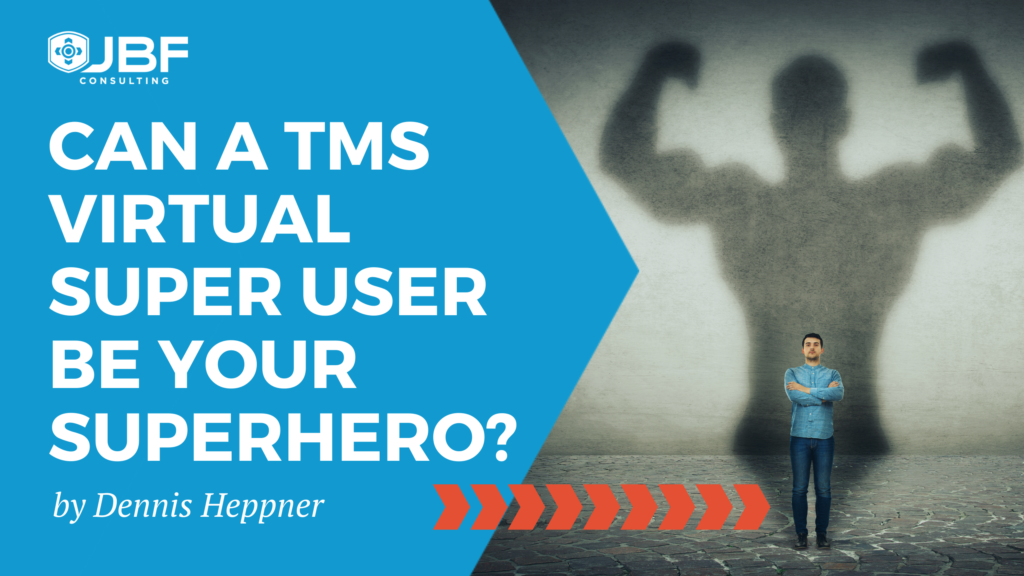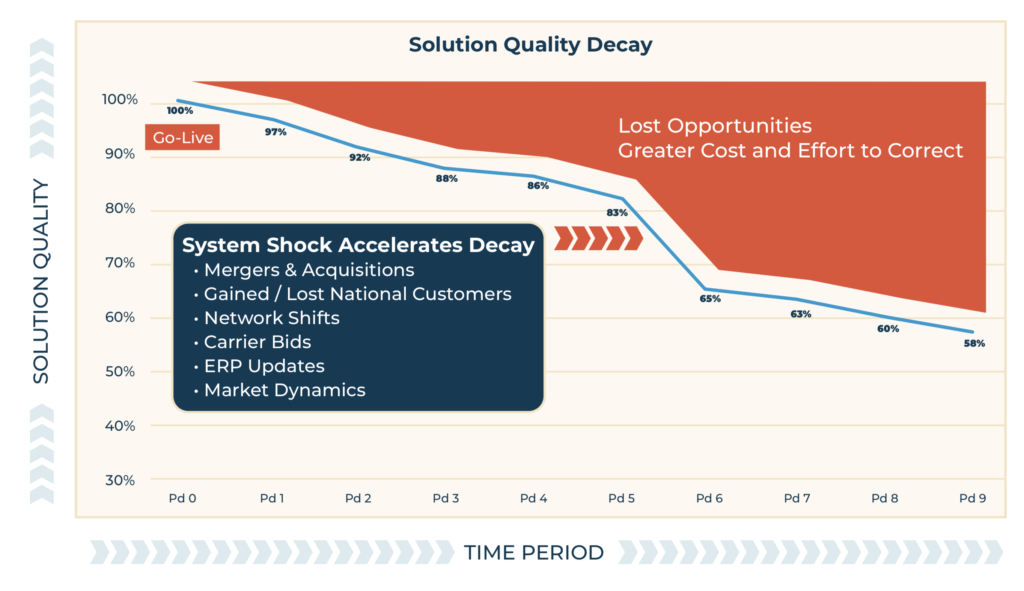Imagine if you will this scenario...
You are a sizable shipper; domestic and international; inbound, outbound, transfers; multi-mode, a fleet operator and broker. You have recently completed a major transformation of your Transportation Management System (TMS) and tangential technology - an upgrade, a replacement, a first time install - and boy are you relieved that the project was delivered on-time and on-budget.
Now it is time to reap the rewards that you promised the C-suite.
Sounds like Nirvana.
Post-Implementation Challenges
However, more often than not, despite superb planning and execution of the implementation, there are some ‘typical’ attitudes and issues that shippers have to deal with post-implementation.
These may fall into one or more of the following buckets:
- The organization that views the TMS as a “Black Box”:
>> Users don’t understand full extent of the TMS’ capabilities.
>> Not sure why the TMS put this load together…
>> Does the TMS even do that?
- The organization that doesn’t properly maintain the TMS:
>> We haven’t cleaned that directory out in a long time.
>> Those rates are like 5 years old.
>> The optimization solution is so slow.
- The organization that has Load Planner turnover + insufficient formalized TMS training:
>> We have significant process gaps and we miss opportunities.
>> This is the way we’ve always done it, not sure why it was set up that way.
>> You always have to break up these loads. I don’t know why.
- Organizational ‘disputes’ between business and IT functions as to ownership of the TMS and/or an internal Super User:
>> Is our Super User an IT function? (yes, but it requires Transportation skills).
>> Is our Super User a Business function? (yes, but it requires Technical skills).
“Despite superb planning and execution of the implementation, there are some ‘typical’ attitudes and issues that shippers have to deal with post-implementation.”
Preventing Solution Decay
Whatever the fundamental reason, it's clear that many organizations have ongoing challenges that need to be addressed in order to prevent ‘Solution Decay’, to continuously improve, and realize the full benefit of the investment.
This is where an unbiased expert can come into the mix and guide the shipper team.
A True Story
Back to our scenario (this is real though).
A large and complex shipper with a TMS that was in place for years recognized that they were spending a lot of time on ‘fire-fighting’ system challenges (platform stability, turnover in users, changes to business processes, etc.), and that they had little time to optimize some fundamental functionality.
Perhaps the functionality was not needed, or deemed low priority, on the install or was not even an initial requirement. But they did realize sub-optimal processes and results were occurring and they needed expert help quickly.
What would you do?
This shipper, who was getting minimal support from the technology vendor, engaged JBF as a Virtual Super User (VSU).
In summary, our team mobilized to identify priority issues, developed and tested solutions with the client, and the client enacted the solutions (some simple; some complex).
A registry of tasks and resolutions, as-needed SME support from both parties, thrice-weekly issue reviews, and regular status updates kept a laser focus on priorities and expected results.
The Results Speak Volumes
Here are a few:
- Cost Effective Resolution
>> Our VSU offering was highly cost-effective versus alternatives such as adding an internal resource.
- Accelerated Benefits
>> Our VSU required no TMS or technical training in order to return value Day One.
- Improved System Performance
>> The VSU had superior TMS knowledge to enable the TMS to perform at its highest potential & drive additional, untapped value.
- Flexibility
>> The VSU reached into our organization for added brain power when needed & the team moved as fast as the shipper was comfortable with.
"Many organizations have ongoing challenges that need to be addressed in order to prevent ‘Solution Decay’, to continuously improve, and realize the full benefit of the investment."
The Takeaway
If you're a shipper that has recognized that the TMS is not performing to your standards, a potential route may be to engage external support to GSD (Get Stuff Done).
The Virtual Super User model may be just the answer you seek to be a SuperHero.
We look forward to helping you with your challenges when it comes to continuously improve, and realize the full benefit of your TMS investment. It's what we do best!
Let’s Have a Conversation!
RELATED POSTS
First-Time TMS Implementation: Essential Organization Considerations for Transportation Leadership
The Go-Live is Not the End of the Journey – It’s a New Beginning!
The Client Journey Through Supply Chain Evolution
ebooks/white papers
Buyers Guide to Transportation Management Systems (white paper)
Optimizing Transportation's Spend and Impact (white paper)
Case Studies
First Time TMS Implementation for Automotive and Industrial Battery Manufacturer
Dennis Heppner is a Principal at JBF Consulting. Dennis’ expertise in transportation, logistics and supply chain operations, and third-party providers spans 25+ years. His experience is broad-based, spanning entire supply chains, including business process redesign, sourcing, distribution network design, transportation management, distribution operations, outsourcing selection, and business strategy for major manufacturers, distributors, retailers including eCommerce, and service organizations.
About JBF Consulting
Since 2003, we’ve been helping shippers of all sizes and across many industries select, implement and squeeze as much value as possible out of their logistics systems. We speak your language — not consultant-speak – and we get to know you. Our leadership team has over 100+ years of logistics and TMS implementation experience. Because we operate in a niche — we’re not all things to all people — our team members have a very specialized skill set: logistics operations experience + transportation technology + communication and problem-solving skills + a bunch of other cool stuff.



